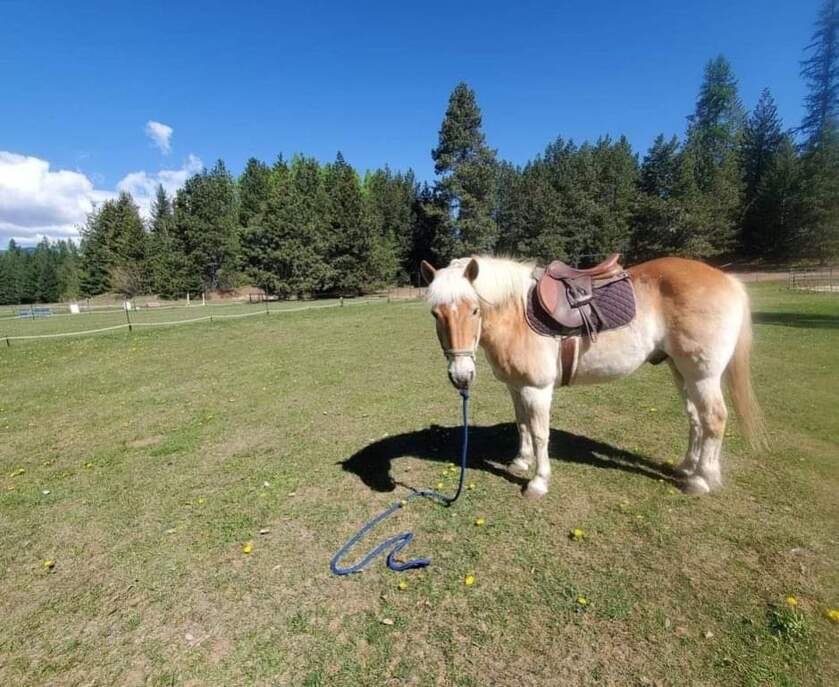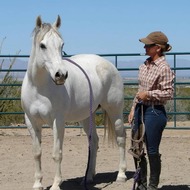
As with everything, there are many interpretations when it comes to the terminology associated with horses. I try to be clear and precise in the words that I'm offering, but there still can be a gray area in the human student's understanding. This often comes from their level of awareness, background, and unintentional anticipation/expectation of their mind "getting ahead" of wherever they are currently at with their horse.
I thought I'd share my perspective on a release with a horse. Here are a few of my thoughts:
What one horse experiences as a release, could be pressure or stress-inducing to another.
Often what humans assume is a release of pressure (whether physical or spatial) is not perceived by the horse in the same way and defeats the purpose.
The release is not about "asking nothing," but is a time for the horse to mentally process and emotionally purge any potentially defensive emotions. But if he is "left" standing with tension, and concern, or is distracted while offered a release, it will be containment for the horse, rather than a processing opportunity.
There is no set "time" for the length of the release, it needs to be appropriate for the particular scenario and individual horse.
Often the human is assuming the initial release is enough, rather than assessing the horse during/after the release to recognize if the horse needed more time, support, etc. to truly let down and process.
If the horse is dramatically/quickly "rushing" out of a release moment, then it wasn't a release.
If the horse is unable to continually release throughout the human interaction, probably too much, too fast has been imposed upon him, and can lead to mentally overwhelming and physically unreasonable behaviors.
The release should not be a patterned experienced, it should be offered whenever necessary, which means the human must stay mentally aware to recognize when they need to offer one to the horse.
The release should not happen only "after" a troubling or trying moment, it can still be offered when the horse is doing well.
The release is an opportunity for human assessment, and to learn how "much" the horse can let down, depending on his initial starting place.
The release will "evolve" as the horse's willingness, try and trust does. So initially it may be having the horse come to a full halt, allowing him to process, whereas later it might be offering a long rein after a specific physical movement.
The release is a GREAT time for the human to check in with themselves to notice if they are breathing consistently, if there is tension in their body, if they are standing/sitting in a balanced position and if they can slow their brain down to assess the horse's focus, muscles, posture, and breathing.
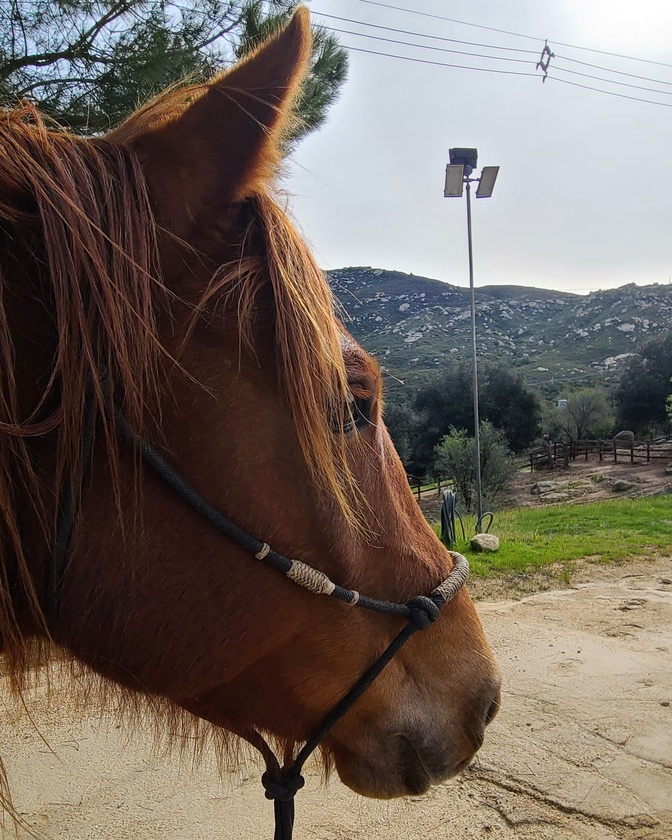
Equine Emergencies & Horse Evacuations
Please comment, like & share
Emergency Evacuation YouTube Video 1
https://youtu.be/52RflMZoP4w
Emergency Evacuation YouTube Video 2
https://youtu.be/jRCmOTq9mto
Horse Rider Communication
Common missing pieces
#alternativehorsemanship #RemoteHorseCoach #horses #horseriding #horserider #horsebackriding
Read the latest edition for details on re-opening The Equestrian Center, clinics worldwide, lessons & coaching.
https://us18.campaign-archive.com/?u=3a7916d83659f6b5c9432415c&id=4a949414de
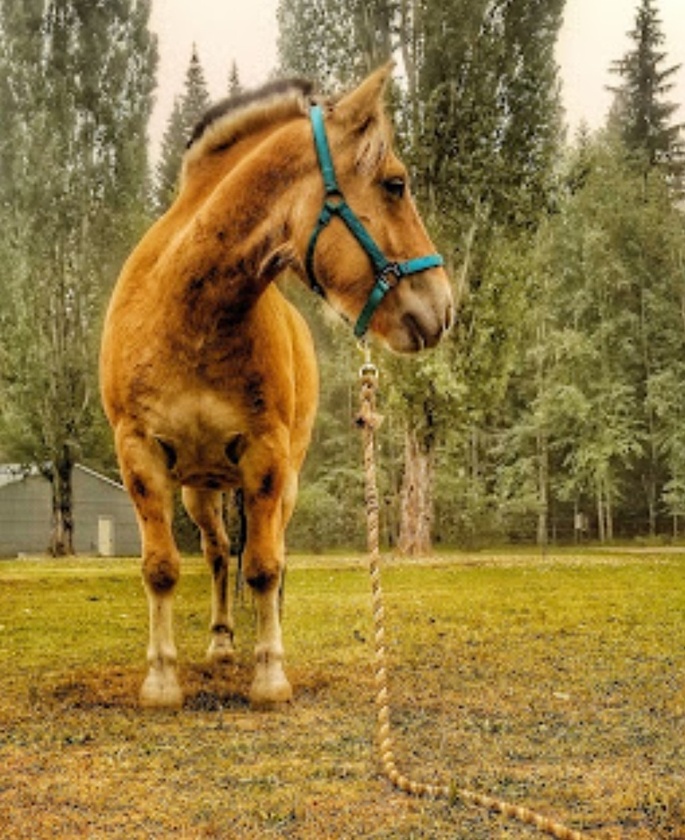
Addressing engaging the horse's mind to create mentally directable equines.
Livestreams April 13th and 27th 5pm pst.
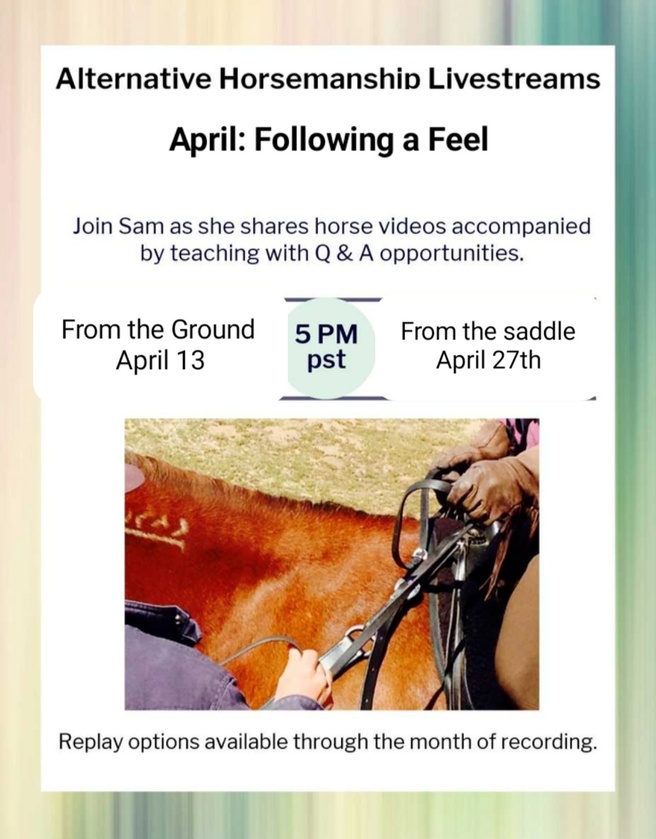
Unfortunately, most horses I meet have pain issues that humans have mistook as behavioral problems. The healthier and more comfortable we can keep our horses, the more available they are to interact with us in a willing and reasonable manner.
Below are some basic questions to ask in regards to your horse’s health.
I suggest keeping a horse health journal making note of diet changes, farrier care, odd behaviors, etc. It can be used as a future reference point to learn from and find what works best for the horse.
Taking pictures from both profiles, front, and rear every six months can also be a good reference.
For those who experience dramatic seasons and environmental changes and for those who have had the same horse(s) for a long time, patterns often occur out of convenience in the horse’s maintenance program.
As the horse gets older possible adjustments may need to be made to the program.
What is the general condition of your horse's mane and coat?
Weight-wise does your horse look consistent or does he look like he ...
